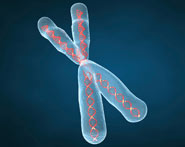


 النبات
النبات
 الحيوان
الحيوان
 الأحياء المجهرية
الأحياء المجهرية
 علم الأمراض
علم الأمراض
 التقانة الإحيائية
التقانة الإحيائية
 التقنية الحيوية المكروبية
التقنية الحيوية المكروبية
 التقنية الحياتية النانوية
التقنية الحياتية النانوية
 علم الأجنة
علم الأجنة
 الأحياء الجزيئي
الأحياء الجزيئي
 علم وظائف الأعضاء
علم وظائف الأعضاء
 الغدد
الغدد
 المضادات الحيوية
المضادات الحيوية|
أقرأ أيضاً
التاريخ: 3-6-2018
التاريخ: 29-4-2021
التاريخ: 16-5-2019
التاريخ: 3-6-2021
|
What are whole exome sequencing and whole genome sequencing ?
Determining the order of DNA building blocks (nucleotides) in an individual's genetic code, called DNA sequencing, has advanced the study of genetics and is one technique used to test for genetic disorders. Two methods, whole exome sequencing and whole genome sequencing, are increasingly used in healthcare and research to identify genetic variations; both methods rely on new technologies that allow rapid sequencing of large amounts of DNA. These approaches are known as next-generation sequencing (or next-gen sequencing). The original sequencing technology, called Sanger sequencing (named after the scientist who developed it, Frederick Sanger), was a breakthrough that helped scientists determine the human genetic code, but it is time-consuming and expensive. The Sanger method has been automated to make it faster and is still used in laboratories today to sequence short pieces of DNA, but it would
take years to sequence all of a person's DNA (known as the person's genome).
Next-generation sequencing has sped up the process (taking only days to weeks to sequence a human genome) while reducing the cost. With next-generation sequencing, it is now feasible to sequence large amounts of DNA, for instance all the pieces of an individual's DNA that provide instructions for making proteins. These pieces, called exons, are thought to make up 1
percent of a person's genome. Together, all the exons in a genome are known as the exome, and the method of sequencing them is known as whole exome sequencing. This method allows variations in the protein-coding region of any gene to be identified, rather than in only a select few genes. Because most known mutations that cause disease occur in exons, whole exome sequencing is thought to be an efficient method to identify possible disease-causing mutations.
However, researchers have found that DNA variations outside the exons can affect gene activity and protein production and lead to genetic disorders-- variations that whole exome sequencing would miss. Another method, called whole genome sequencing, determines the order of all the nucleotides in an individual's DNA and can determine variations in any part of the genome.
While many more genetic changes can be identified with whole exome and whole genome sequencing than with select gene sequencing, the significance of much of this information is unknown. Because not all genetic changes affect health, it is difficult to know whether identified variants are involved in the condition of interest. Sometimes, an identified variant is associated with a different genetic disorder that has not yet been diagnosed .



|
|
|
|
فيروس جديد يثير الذعر في الصين.. وكشف حقيقة ما يحدث
|
|
|
|
|
|
|
ظهور شريان إضافي في ذراع الإنسان.. لماذا يحدث ذلك؟
|
|
|
|
|
|
|
ضمن فعاليات أسبوع وليد الكعبة .. العتبة العلوية المقدسة تُقدّم فعاليات ثقافية متنوّعة عبر المنصة العلوية
|
|
|